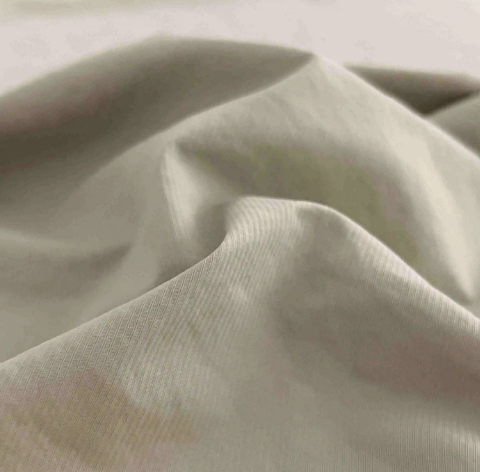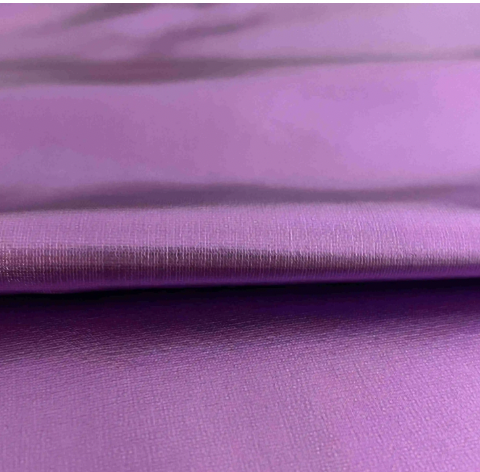The Science Behind Breathable Fabrics
How Moisture-Wicking Technology Works
Moisture-wicking fabrics revolutionize how we stay comfortable during physical activities by actively drawing sweat away from the skin. This is achieved through the use of advanced materials designed to encourage fast evaporation, keeping the skin dry. A pivotal study in textile research highlighted that moisture-wicking materials significantly reduce skin temperature, which can enhance comfort and performance. Moisture-wicking fabrics utilize various technologies, each offering unique benefits. For example, microporous membranes like Gore-Tex have fine pores allowing moisture vapor to escape while blocking water entry, enabling effective sweat evaporation. In contrast, hydrophilic coatings employ chemical treatment to pass moisture through diffusion, effectively using the fabric’s molecular structure. Understanding these technologies helps appreciate how garments remain effective even under demanding conditions.
Airflow Principles in Fabric Design
The principle of airflow is vital in the design of breathable fabrics, effectively managing comfort and ventilation. These fabrics are engineered to allow air permeability, which enhances comfort by facilitating air circulation around the body. Experts often recommend a minimum airflow rate ranging from 500 to 1000 breathability units for optimal comfort. This range ensures adequate ventilation without compromising fabric structure. A crucial factor contributing to this process is the weave pattern of the fabric. Innovative designs incorporate patterns that allow vastly improved airflow compared to traditional weaves. This not only increases breathability but also supports the fabric's functional performance. Through strategically engineered weaves, fabrics can balance the need for ventilation with other attributes like durability and aesthetic appeal.
Thermal Regulation Mechanisms
Breathable fabrics are pivotal in thermal regulation, maintaining consistent body temperatures by efficiently releasing accumulated heat. These fabrics effectively manage heat retention and dissipation, ensuring comfort even in extreme conditions. Scientific research has demonstrated that fabrics with thermoregulation capabilities drastically reduce overheating risks, particularly in demanding environments. Innovations such as phase change materials (PCMs), which adapt to fluctuating temperatures, illustrate this principle. PCMs absorb and release heat energy when transitioning between phases, providing adaptive warmth or cooling. By understanding these mechanisms, we can better appreciate breathable fabrics’ role in sustaining comfort across different activities and climates. They allow us to engage in various endeavors without being hindered by temperature-induced discomfort.
Key Benefits of Breathable Textiles
Reducing Skin Irritation & Odor
Breathable fabrics can significantly reduce skin irritation by effectively managing moisture buildup. They draw sweat away from the skin, preventing conditions favorable for irritation. Moreover, dermatological studies have pointed out a reduction in skin rashes among users of breathable materials, underscoring their health benefits. Odor-resistant properties further enhance these fabrics by reducing bacteria growth, ensuring garments remain fresh and hygienic throughout wear. This makes breathable textiles an excellent choice for those with sensitive skin or individuals seeking hygiene-focused solutions.
Temperature Control During Physical Activity
Moisture-wicking fabrics have changed the way people keep comfortable (or dry!) during physical activities by pulling sweat from the body. Made of high-tech materials that promote rapid evaporation to keep you dry. Moisture-wicking materials have shown to lower skin temperature, and thereby improve comfort and performance, as demonstrated in a key work in textile research. There are various technologies behind moisture-wicking fabrics, and each provides its own advantages. For instance, microporous membranes such as those of Gore-Tex have small pores that allow moisture vapor to pass through but not liquid water, which facilitates transpiration. In the hydrophilic system, chemical treatment allows moisture to pass through the fabric by diffusion but even the structural molecule is utilized. Knowledge of these technologies makes you appreciate how clothing works so well, even on the toughest of conditions.
All-Day Freshness for Work & Travel
Breathable textiles promise all-day freshness, making them ideal for work and travel scenarios. These fabrics maintain comfort levels, keeping wearers feeling cool and dry throughout the day, a fact supported by research on breathable fabric users in office settings. Anecdotal evidence from frequent travelers emphasizes their satisfaction with breathable clothing, noting improved comfort during long journeys. Such textiles are invaluable for professionals and travelers alike who need reliable performance and comfort, ensuring freshness and ease across diverse environments.
Top Breathable Fabric Types
Performance Synthetics: Polyester & Nylon
Performance synthetics like polyester and nylon are top choices in breathable fabric categories, primarily because of their moisture-wicking properties. These fabrics are designed to move sweat away from the skin, keeping users dry during intense physical activities. In recent years, production statistics show a marked increase in the use of polyester and nylon in activewear, underscoring their popularity for athletic purposes. However, it's important to address the environmental impact of synthetic fibers, as their production can contribute to pollution. Recycling initiatives are critical to mitigating these impacts, offering ways to reprocess these materials into new products.
Natural Fibers: Bamboo & Merino Wool
Natural fibers such as bamboo and merino wool are renowned for their breathability, largely due to their moisture absorption and odor-resistant properties. Bamboo, for instance, is highly celebrated for its sustainability. Studies suggest that bamboo cultivation requires less water and pesticides, endorsing it as an eco-friendly fabric choice. Meanwhile, merino wool is valued for its adaptability to both temperature and moisture, which makes it a suitable fabric for year-round wear. This adaptability ensures that wearers remain comfortable, regardless of weather conditions, showcasing the versatile nature of these natural textiles.
Hybrid Blends for Enhanced Airflow
There is a growing trend toward hybrid fabrics that blend natural and synthetic fibers to enhance performance. These innovative mixtures aim to provide superior breathability. For instance, a blend of cotton and polyester can improve airflow while retaining moisture-wicking properties. Consumers are increasingly drawn to the versatility of hybrid textiles, as these combinations cater to diverse needs, from casual wear to extreme sports. This shift in consumer purchasing trends highlights the preference for fabrics that offer both functionality and comfort, driving manufacturers to continually innovate with their fabric offerings.
Everyday Applications of Breathable Materials
Commuter-Friendly Workwear Solutions
Eco-friendly fibres such as bamboo and merino wool also receive attention for their breathable capabilities, a feature often attributed to their moisture-wicking and anti-bacterial qualities. Bamboo is, for example, lauded for its sustainability. Bamboo is reported to require less water and chemicals to farm, making it a more environmentally-friendly fabric option. On the other hand, merino wool is known and prized for its ability to adjust to temperature and moisture, allowing it to be a year-round fabric. This flexibility means the people wear them are comfortable in both hot and cold temperatures, demonstrating the multifunctionality of nature-based fibres.
High-Intensity Sportswear Essentials
The demand for high-performance sportswear has been rising significantly, especially for high-intensity activities. Experts in fitness emphasize the importance of breathable materials in sportswear, as they enhance airflow and moisture management, crucial for maintaining body temperature during strenuous activities. According to a recent market analysis, the activewear sector—which places a strong emphasis on breathability—is projected to grow at a steady rate of 5.1% annually until 2033. This growth is fueled by the increasing preference for garments that offer superior comfort and support during exercise, an area where brands like Under Armour and Adidas excel by incorporating advanced breathable technology into their products.
Travel Gear for Hot Climate Comfort
Breathable fabrics play a pivotal role in enhancing comfort for travelers in hot climates. Whether exploring tropical destinations or navigating bustling urban areas, lightweight and moisture-wicking clothing helps maintain body temperature. Travel experts recommend breathable clothing options, such as linen and specific polyester blends, to keep cool and comfortable. Travelers have noted a significant preference for breathable gear, as these materials enhance comfort and reduce the impact of humidity and heat. With ever-increasing travel trends, brands continue to innovate, ensuring vacationers can enjoy their journeys with optimal comfort.

Choosing the Right Breathable Fabric
Activity-Specific Fabric Selection
Selecting the right breathable fabric based on activity type is essential for comfort and performance. Different activities demand varying levels of breathability, which can impact overall enjoyment and functionality. For example, hiking requires fabrics that offer moisture-wicking properties to accommodate varying weather conditions, while running demands lightweight fabrics that promote high airflow. Casual wear benefits from more versatile options that balance style with comfort. Experts recommend synthetic blends for sports with intense physicality, while cotton may be suitable for lighter activities. This approach ensures that the chosen fabric perfectly matches the activity, optimizing comfort and effectiveness.
Durability vs. Breathability Balance
In the world of performance gear, offering durability as well as breathability provides a unique set of problems. Granted, breathable fabrics tend to feel more comfortable when in action, but longevity may be a tradeoff. Consumer testimonials tell us that the less durable fabrics have significantly better ventilation, but are not quite as long lasting, when under heavy stress. Getting the balance right is crucial, especially in sports where gear sees a lot of regular wear and tear. According to experts, you want to go for reinforced synthetic materials that offer maximum strength without sacrificing breathability. This blend guarantees gear integrity while delivering the comfort you demand to achieve maximum performance.
Climate-Appropriate Material Choices
Choosing breathable fabrics based on climate and weather conditions is crucial for maintaining comfort in diverse environments. Climatological studies suggest that fabrics like linen and cotton excel in heat due to their ability to promote airflow and keep skin cool, while wool and certain synthetic blends offer better insulation for cold settings. It's also essential to consider fabric layering techniques for adaptability in changing climates, allowing wearers to adjust their clothing based on rising or falling temperatures. Such thoughtful material selection and layering strategies enhance comfort and help navigate fluctuating climates effectively, ensuring weather-appropriate attire that aligns with specific conditions.
FAQ Section
What is moisture-wicking technology?
Moisture-wicking technology involves fabrics designed to draw sweat away from the skin, allowing for faster evaporation and keeping the wearer dry and comfortable.
Which fabrics are considered breathable?
Breathable fabrics include materials like polyester, nylon, bamboo, merino wool, and hybrid blends that allow air circulation and manage moisture effectively.
How do breathable fabrics aid in temperature regulation?
Breathable fabrics help in temperature regulation by releasing excess heat and moisture, thus maintaining consistent body temperatures even in extreme climates.
Are breathability and durability mutually exclusive in performance fabrics?
Clothing Fiberbreathability regulates according to weather condition and climate in order to ensure you can enjoy your time no matter where you are. [[Climatological studies have shown that, in general, linen and cotton seem to be the best choice for hot weather since they can help to keep bodies cool by promoting airflow and wicking the moisture that accumulates on skin, while wool and some synthetic blends provide the most insulation in cold environments. Fabric-layering techniques are also very important in flexible design, enabling wearers to ‘shed’ and add pieces depending on the ambient temperature. By taking careful consideration of their materials and by thoughtfully layering them, they also add comfort and will allow you to navigate the constantly changing climate with ease, so you can wear weather-appropriate clothes for the specific conditions.
What should I consider when choosing the right breathable fabric?
Consider the activity type, climate, and balance between breathability and durability. It's important to choose fabrics that match the specific needs of your activity and environment.
